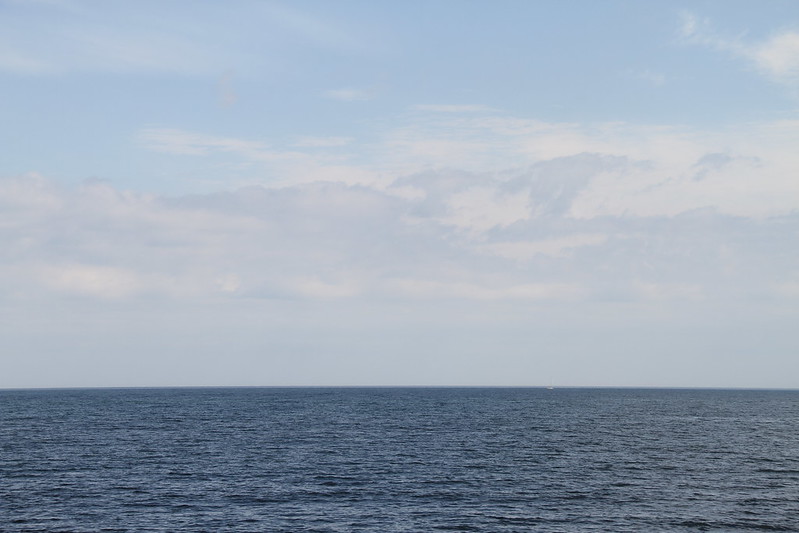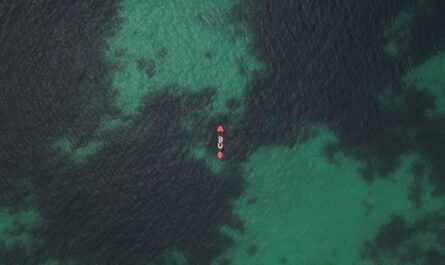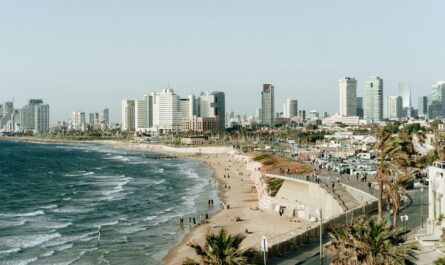The Atlantic Ocean, with its vast expanse and rich biodiversity, has long been a critical component of Earth’s climate system and a vital resource for humanity. However, the increasing concentration of carbon dioxide (CO₂) in the atmosphere due to human activities is altering the chemistry of the ocean. This phenomenon, known as ocean acidification, poses a severe threat to marine ecosystems, fisheries, and coastal communities.
This comprehensive article delves into the science of ocean acidification, its impact on the Atlantic Ocean, and the cascading effects on marine life, ecosystems, and human livelihoods. It also explores innovative solutions and global efforts to address this pressing environmental challenge.
What is Ocean Acidification?
Ocean acidification refers to the ongoing decrease in the pH of the Earth’s oceans, caused by the absorption of atmospheric CO₂.
1. How It Happens
- CO₂ Absorption: Oceans absorb approximately 25-30% of the CO₂ emitted into the atmosphere from human activities such as fossil fuel combustion, deforestation, and industrial processes.
- Chemical Reaction: When CO₂ dissolves in seawater, it reacts with water to form carbonic acid, which dissociates into bicarbonate ions and hydrogen ions. This process reduces the availability of carbonate ions, essential for many marine organisms.
2. Changes in Ocean Chemistry
- Decreased pH: The pH of ocean water has dropped from 8.2 to 8.1 since the Industrial Revolution, representing a 30% increase in acidity.
- Regional Variations: Ocean acidification is more pronounced in colder regions, such as the North Atlantic, due to higher CO₂ solubility in cold water.
The Atlantic Ocean: A Crucial Player
The Atlantic Ocean plays a pivotal role in regulating Earth’s climate and supporting global biodiversity. It is particularly vulnerable to ocean acidification due to:
- High Carbon Uptake: The Atlantic absorbs more CO₂ per unit area than other oceans due to its unique currents and high biological productivity.
- Vulnerable Ecosystems: Coral reefs, shellfish beds, and cold-water habitats are highly sensitive to pH changes.
Impacts of Ocean Acidification on Marine Ecosystems
1. Coral Reefs
- Threat to Reef Formation: Coral polyps rely on calcium carbonate to build their skeletons. Acidification reduces the availability of carbonate ions, weakening reefs.
- Atlantic Coral Reefs: Iconic reefs such as the Mesoamerican Barrier Reef and the Bahamas’ coral ecosystems are at significant risk.
- Biodiversity Loss: Coral reefs support thousands of species; their degradation leads to a domino effect on associated marine life.
2. Shellfish and Mollusks
- Calcification Issues: Organisms like oysters, clams, and scallops struggle to form shells in acidic waters.
- Economic Impact: The Atlantic shellfish industry, vital for coastal economies, faces declining harvests due to acidification.
3. Plankton
- Foundation of the Food Web: Calcifying plankton, such as coccolithophores, are critical for marine food webs and carbon cycling.
- Disrupted Balance: Acidification weakens these organisms, affecting species that depend on them, including fish and whales.
4. Fish Populations
- Behavioral Changes: Acidic waters interfere with fish behavior, making them more vulnerable to predators.
- Atlantic Fisheries: Commercially important species like cod, herring, and tuna are at risk due to disrupted ecosystems and declining prey availability.
5. Cold-Water Ecosystems
- Deep-Sea Vulnerability: Cold-water corals and deep-sea species in the North Atlantic are particularly affected by acidification.
- Unique Species at Risk: Many of these ecosystems host endemic species found nowhere else on Earth.
Economic and Social Implications
1. Fisheries and Aquaculture
- Economic Losses: Ocean acidification threatens the multi-billion-dollar Atlantic fisheries and aquaculture industries.
- Community Livelihoods: Coastal communities dependent on fishing face reduced incomes and food security challenges.
2. Tourism
- Decline in Marine Tourism: Coral reef degradation and biodiversity loss diminish the appeal of marine tourism hotspots, impacting local economies.
3. Coastal Protection
- Weakened Natural Barriers: Coral reefs and shellfish beds act as natural barriers against storm surges. Their decline increases coastal vulnerability to erosion and flooding.
Drivers of Ocean Acidification in the Atlantic
1. Anthropogenic CO₂ Emissions
- Fossil Fuels: Burning coal, oil, and natural gas remains the primary source of CO₂ emissions.
- Deforestation: Loss of forests reduces the planet’s capacity to absorb CO₂.
2. Nutrient Runoff
- Eutrophication: Excessive nutrients from agriculture and urban runoff contribute to localized acidification, particularly in estuaries and coastal areas.
3. Climate Change
- Feedback Loops: Warming waters exacerbate acidification by reducing CO₂ solubility and altering circulation patterns.
Efforts to Mitigate and Adapt
1. Global Climate Initiatives
- Paris Agreement: Targets to reduce greenhouse gas emissions are essential to slowing ocean acidification.
- Carbon Capture and Storage (CCS): Technologies that capture CO₂ emissions before they enter the atmosphere can reduce ocean acidification.
2. Marine Protected Areas (MPAs)
- Conservation Zones: MPAs in the Atlantic, such as the Sargasso Sea and areas around Bermuda, protect vulnerable ecosystems from additional stressors.
3. Restoration Projects
- Coral Nurseries: Restoration projects involve growing heat- and acidification-resistant coral strains.
- Seagrass and Mangrove Planting: These habitats absorb CO₂ and provide refuges for marine life.
4. Reducing Nutrient Pollution
- Agricultural Practices: Implementing sustainable farming techniques reduces runoff.
- Urban Waste Management: Upgraded wastewater treatment facilities can minimize coastal eutrophication.
5. Scientific Research and Monitoring
- Atlantic Research Programs: Initiatives like the Atlantic Meridional Transect (AMT) study acidification impacts across the ocean.
- Innovative Technologies: Autonomous sensors and underwater drones collect real-time data on pH levels and ecosystem health.
The Role of Communities and Stakeholders
1. Local Involvement
- Community Science: Engaging local communities in monitoring efforts enhances data collection and awareness.
- Sustainable Practices: Promoting sustainable fishing and tourism practices helps reduce pressure on ecosystems.
2. Corporate Responsibility
- Sustainable Business Models: Companies dependent on marine resources are investing in sustainability initiatives.
- Carbon Offset Programs: Businesses are funding projects that reduce or offset CO₂ emissions.
3. Education and Awareness
- Public Campaigns: Informing the public about the causes and consequences of ocean acidification fosters support for conservation.
- School Programs: Introducing ocean science into school curriculums inspires the next generation of marine stewards.
Future Outlook
1. Challenges
- Continued CO₂ Emissions: Without significant reductions, acidification will intensify, with dire consequences for marine life.
- Unpredictable Ecosystem Responses: The complex interactions in marine ecosystems make it difficult to predict the full impact of acidification.
2. Reasons for Hope
- Technological Innovations: Advances in restoration and monitoring technologies provide new tools for combating acidification.
- Global Collaboration: International agreements and research efforts are fostering a coordinated approach to ocean conservation.
3. Long-Term Solutions
- Carbon Neutrality: Transitioning to renewable energy and sustainable practices is crucial for addressing the root causes of acidification.
- Resilient Ecosystems: Protecting and restoring marine habitats enhances their natural resilience to environmental stressors.
Conclusion
Ocean acidification is one of the most pressing environmental challenges of our time, with far-reaching implications for the Atlantic Ocean’s ecosystems and the communities that depend on them. The changes in ocean chemistry caused by carbon emissions threaten to disrupt the delicate balance of marine life, weaken economies, and accelerate climate change.
However, through innovative technologies, global collaboration, and community-driven initiatives, there is hope for reversing the trend and safeguarding the Atlantic’s marine treasures. By taking decisive action today, we can ensure that the Atlantic Ocean continues to thrive as a source of life, inspiration, and sustenance for generations to come.



